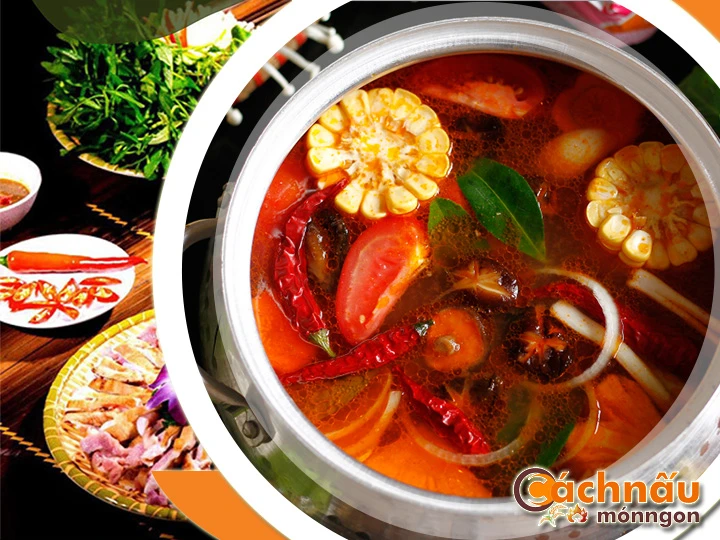Try the Traditional Rabbit Hot Pot Secrets at Home - Lẩu thỏ
Try the Traditional Rabbit Hot Pot Secrets at Home - Lẩu thỏ
Blog Article
Rabbit hot pot, a savory and gastronomic treasure, has been treasured across numerous regions and cuisines for centuries.
This comprehensive guide explores the sum of all parts you need to recognize about rabbit hot pot, from its historical background to modern variations, nutritional benefits, and detailed guide for creating the ideal dish at home. Whether you are a professional cook or a novice cook, this guide will encourage and guide you to refine your talent of rabbit hot pot.

UNVEILING THE BACKGROUND & CULTURE RELATED TO STEWED RABBIT.
Rabbit hot pot represents a unique and classic dish with significant traditions in various regions. Its demand stems not only from its savory flavor but also from its legacy and traditions.
1. The Origins of Rabbit casserole.
- Early Beginnings: Rabbit casserole was created in villages where wild hares were a abundant, nutritious food source. In early Chinese history, it was a popular food, particularly during celebrations.
- Widely Popularized: In Western countries like Belgium, rabbit was commonly found in soups, becoming modern versions of rabbit casserole as the dish became internationally recognized.
2. Rabbit Stew integral to Eastern Heritage.
- China: Known as China’s beloved rabbit hot pot, rabbit hot pot is celebrated in the Sichuan region, recognized for its bold flavors and commonly shared during festive occasions.
- Across Korea and Japan: While relatively rare, rabbit hot pot is occasionally prepared as a medicinal dish in South Korea, or borrowing ideas from Japanese hot pot traditions in the Japanese archipelago, including local produce and flavors.
- Vietnam: Although rabbit hot pot is not typically eaten every day, it is recognized during important celebrations or in villages where rabbit meat is easily found. It is often prepared with distinctive spices such as lemongrass, ginger, and chili, paired with fresh vegetables like kangkong, green mustard, or neptunia leaves. This dish is adored for its singular taste and healthy attributes, frequently shared at special moments with close ones.
Tại Việt Nam, tuy không thường xuyên là món ăn được ưa chuộng ngày qua ngày, nhưng thường thấy trong những dịp đáng nhớ hoặc ở những nơi hẻo lánh, nơi nguồn thịt thỏ phong phú. Thường được nấu cùng các loại gia vị như sả, gừng tươi, và ớt đỏ, kết hợp với rau nhút. Món ăn này rất được ưa chuộng nhờ hương vị độc đáo và lợi ích sức khỏe, thường xuất hiện phổ biến ở.
3. Rabbit Hot Pot throughout Food Traditions in Europe.
- France: Often prepared as a robust stew with red wine, fragrant herbs such as rosemary, and classic root vegetables. Rabbit hot pot is a time-honored dish for family reunions.
- Italy: The dish “Cacciatore”, featuring rabbit stewed in tomato and wine sauce, is a inspiration for hot pot recipes with rabbit.
MASTERING RABBIT HOT POT: RECIPES AND METHODS
Rabbit hot pot is a versatile dish that merges natural components, aromatic broths, and distinct techniques to create a hearty and delicious feast. Below are essential tips into the primary methods and methods to excel in rabbit hot pot.
The Fundamental Recipe for Rabbit Hot Pot
* Ingredients:
- 1 whole rabbit (sectioned)
- 4 cups of broth (chicken)
- Vegetables (potatoes)
- Spices and herbs (ginger)
- Seasonings (soy sauce)
- Optional: noodles for serving
* Steps:
- Getting the Rabbit Ready: Wash and section the rabbit into pieces. Marinate with salt, black pepper, and a splash of soy sauce for half an hour to boost the flavor.
- Make the Broth: Heat a pot with a touch of oil. Fry minced garlic and sliced ginger until aromatic. Add your choice of broth and bring it to a boil.
- Simmer the Rabbit: Add the rabbit pieces into the pot and let them simmer on low heat for 30-40 minutes until cooked through.
- Include the Veggies: Add your preferred vegetables and cook until they are tender but still vibrant.
- Plate Up: Transfer the hot pot to a large bowl. Serve with side dishes and extras like rice or noodles.
Mastering Rabbit Hot Pot Techniques
- Seasoning:
. Marinate the rabbit with a mixture of salt, pepper, and seasonings to intensify its natural flavor.
. For more richness, use wine, soy sauce, or a mix of herbs like rosemary and thyme.
- Building Layers of Flavor:
. Start by simmering the rabbit in the broth to extract its essence.
. Layer vegetables strategically based on their required time.
- Cooking Time:
. Avoid letting it dry out the rabbit, as it can become tough.
. Test for doneness by checking if the meat is fork-tender.
- Broth Adjustments:
. Adjust the broth by adding additional seasonings as needed.
. Experiment with different types of broths, such as herbal-infused variations.
Tips for Success
- Fresh Ingredients: Always choose locally sourced rabbit and in-season greens for the best results.
- Balance Flavors: Be mindful of the spiciness in the broth. Try thưởng thức lẩu thỏ and refine frequently during cooking.
- Creative Accompaniments: Offer a variety of sauces like garlic-chili oil or soy-based dips to enhance the dining experience.
- Visual Appeal: Use a portable stove or serve the hot pot as the centerpiece to foster interaction.
By perfecting these methods and recipes, you can prepare a rabbit hot pot that’s delicious and attractive, making it a standout dish for any occasion or gathering. Report this page